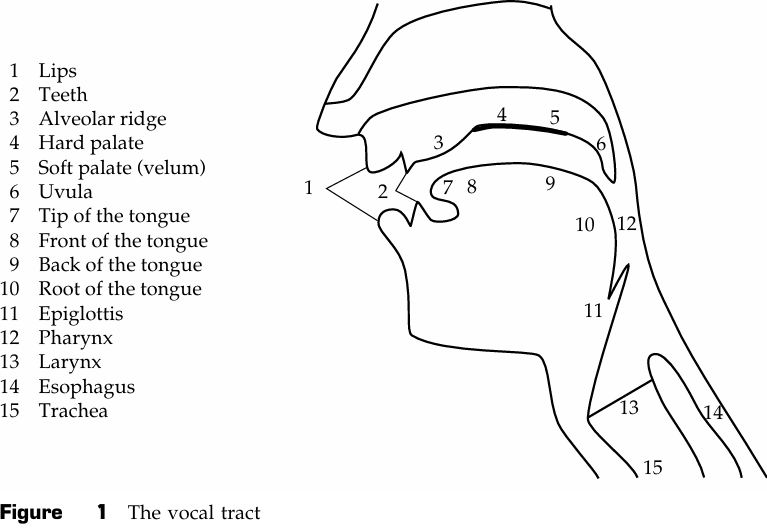
Description and Articulation of Sounds of English The vocal tract
 المؤلف:
Mehmet Yavas̡
المؤلف:
Mehmet Yavas̡
 المصدر:
Applied English Phonology
المصدر:
Applied English Phonology
 الجزء والصفحة:
P4-C1
الجزء والصفحة:
P4-C1
 2025-02-18
2025-02-18
 1008
1008
Description and Articulation of Sounds of English
The vocal tract
Our examination of how sounds are made will begin with the vocal organs. The air we use in sound production comes from the lungs, proceeds through the larynx where the vocal cords are situated, and then is shaped into specific sounds at the vocal tract. In sound production, it is generally the case that the articulators from the lower surface of the vocal tract (lower articulators, i.e. the lower lip, the lower teeth, and the tongue) move toward those that form the upper surface (upper articulators, i.e. the upper lip, the upper teeth, the upper surface of the mouth, and the pharyngeal wall).
Starting from the outer extreme, we have the lips and the teeth. In the upper surface, behind the upper teeth, there is a bumpy area (the alveolar ridge), which is followed by a larger bony area (the hard palate). Further back is a flaccid area, the ‘soft palate’ (or ‘velum’), which is unsupported by bone. The soft palate is a movable organ, which opens and closes the velopharyngeal passage (the passage that links the pharynx to the nasal cavity). Finally, at the back, the velum narrows to a long, thin pointed structure that is called the ‘uvula’.
In the lower part of the mouth, after the lower lip and the teeth, lies the tongue. The ‘tip’ (or ‘apex’) of the tongue is the foremost part. Just behind the tip is the small surface called the ‘blade’ (or ‘lamina’). The so-called ‘front’ part of the tongue is the area between the tip/blade and the center. The hindmost part of the horizontal surface of the tongue is called the ‘back’ (or ‘dorsum’). At the end of the tongue, we have the ‘root’, which is the vertical surface against the pharyngeal wall. Finally, we have the ‘epiglottis’, which is a leaf-shaped cartilage that sticks up and back from the larynx.

 الاكثر قراءة في Phonology
الاكثر قراءة في Phonology
 اخر الاخبار
اخر الاخبار
اخبار العتبة العباسية المقدسة


